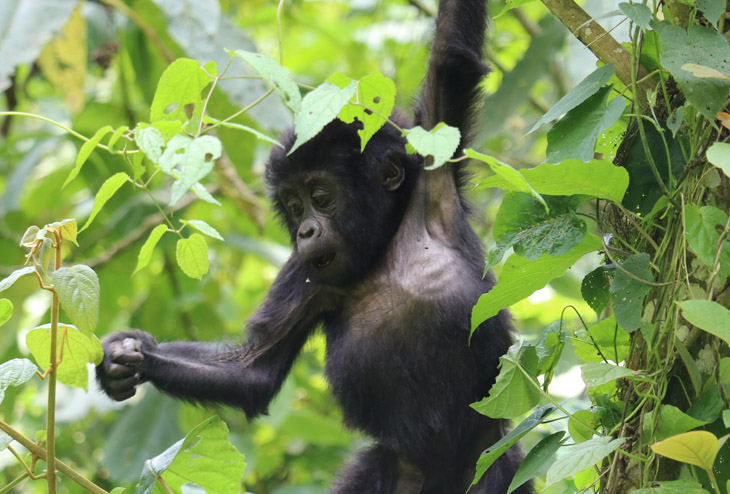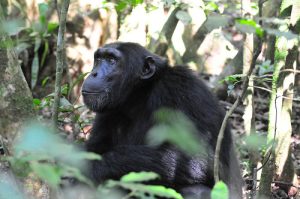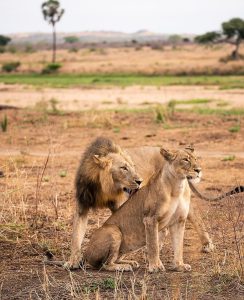- August 2, 2016
- Posted by: Administrator2
- Category: Rwanda News

National Parks Rwanda- Main Four Rwanda National Parks
Are you interested in knowing about Rwanda’s national parks? You are reading the right article. Rwanda is one of Africa’s known safari destinations with four main national parks. These have greatly attracted many people to come for tours to Rwanda over the past decades. These National parks mainly include; Volcanoes National Park, Akagera National Park, the so-common Nyungwe National Park, and Gishwati Mukura national park. Volcanoes National Park lies in northwestern Rwanda. It borders Virunga National Park in the Democratic Republic of Congo. And the Mgahinga Gorilla National Park in Uganda. This park is commonly known for the critically endangered mountain gorillas and it is home to the eight volcanoes of the Virunga Massif which are covered in rainforest and bamboo.
In this article, you will discover the mysteries of the 4 National parks in Rwanda, their location, history, attractions, sizes, activities, and their accessibility.
List of Rwanda’s national parks
- Volcanoes National park
- Akagera national park
- Nyungwe Forest national park
- Gishwati Mukura national park
Volcanoes national park

Location: Volcanoes national park is situated in Northwestern parts of Rwanda and lies 109.4 kilometers from the capital city Kigali.
History: Having been first gazetted in 1925 to protect mountain gorillas, Volcanoes national park is the oldest national park in Africa. It was established after poaching had become a threat to wildlife in those days. Later on in 1930, Volcanoes national park’s boundaries were pushed further to Rwanda and the Democratic Republic of Congo (DRC). This aimed at establishing a bigger conservation area to be known as the Great Albert national park. This effort was later in vain after the land was occupied by humans.
As years went by, Volcanoes national park became Dian Fossey’s research base. Dian Fossey was an American zoologist who spent most of her life making research on mountain gorillas. Dian Fossey was later murdered and buried in the park and her tomb attracts multitudes of travelers from all corners of the world.
This park was the base for the zoologist Dian Fossey. The national park was gazette in 1925, as a small area bound by Karisimbi, Visoke, and Mikeno, intended to protect the mountain gorillas from poachers. This was the first national park to be created in Africa. The vegetation varies considerably due to the large altitudinal range within the park. There is also some lower montane forest. The park is best known for the mountain gorillas, the other mammals also include; the golden monkeys, black-fronted duiker, buffalos, spotted hyenas, and the bushbucks. There are also some elephants, though these are very rare.
Bird species
There are 178 bird species, with at least 13 species and i6 subspecies endemic to the Virunga and Ruwenzori Mountains. It has greatly attracted many tourists to come for gorilla trekking safaris to Rwanda. The main activities done in the park also include; Gorilla visits, Golden monkey visits, climbing of Karisimbi Volcano, climbing of Bisoke volcano, Tour of the lakes and the caves, and the visit of the tomb of Dian Fossey.
Size: Volcanoes National Park covers an area of approximately 160 square kilometers.
Attractions: Volcanoes National Park is famous for being home to over 10 gorilla families and over 170 bird species. Other animals such as buffaloes, bushbucks, golden monkeys, and elephants can be spotted within the park. The activities that take place in Volcanoes national park include gorilla trekking, gorilla habituation experience, golden monkey tracking, mountain hiking, visiting Dian Fossey’s grave, and birding, to mention but a few.
Best time to visit the park: Like any other part of Rwanda, Volcanoes national park is open to travelers all year round, however, the best time for best experiences is during the dry months of December to late February and late May to late September. That is when the trails are not muddy for walking and hiking.
How to get there
Access to Volcanoes National Park can be made possible both by road and air.
- By road; 2 hours from the capital Kigali
- By air; Board a chartered plane with Akagera Aviation which will take you to Kiningi.
Where to stay / Accommodation facilities
Accommodation while at Volcanoes national park ranges from budget to mid-range to luxury, the choice is yours to make. Here are some of the accommodation facilities; Bisate Lodge, Virunga Lodge, Gorilla Volcanoes Lodge, Mountain Gorilla View Lodge, and Kiningi Guest House.
Akagera National park – An exceptional national park in Rwanda
Location: Akagera national park is located in the Eastern province of Rwanda at the border of Tanzania.
History

Akagera national park was gazetted in 1934 and traces its name from the magnificent Akagera River which flows in Eastern Rwanda. The park is part of the largest protected area in East Africa and Africa as a whole. It is also famous for being home to the big five animals that is lion, leopard, elephant, buffalo, and rhinoceros.
Akagera National Park is located in the northeast of Rwanda along the border with Tanzania. It was named after the Akagera River which flows along its eastern boundary and it feeds into a labyrinth of lakes of which the largest is Lake Ihema. The forest-fringed lakes, papyrus swamps, savannah plains, and rolling highlands combined in a relatively small area make Akagera National Park. It covers 12000 kilometers in eastern Rwanda, it was founded in 1934 to protect animals and vegetation in their Eco regions; savannah, mountain, and swamp. Due to the land shortages in 1997, the western boundary was re-gazetted and much of the land was allocated as farms to returning refugees. The park was also reduced in size from over 2500km2 to its current size.
Wildlife species
The wildlife species in Akagera National Park also include; elephants, zebras, buffalos, giraffes, various species of antelopes, crocodiles, and hippos. These have attracted many tourists to come for safaris to Rwanda. However, the fate of the park’s few remaining lions is uncertain and while the leopards are certainly around. Bird life in Akagera is however outstanding, with 550 species recorded with many rare specials, including a good density of raptors and good numbers of large water birds around the lakes.
Size: Akagera National Park covers an area of approximately 2500 square kilometers made up of savannah plains, woodland, and open grasslands.
Attractions: Akagera national park is famous for being home to the big five animals (lion, leopard, elephant, buffalo, and rhinoceros) as well as over 500 species of birds which include shoebill stork, African open-bill stork, fish eagle, to mention a few. Other animals that can be spotted here include zebras, hyenas, monkeys, baboons, giraffes, etc. The other spectacular activity that happens at Akagera national park is the boat cruises on Lake Ihema.
How to get to Akagera national park
- By road; a drive from Kigali city takes two and a half hours through the lush vegetation and rolling hills.
Where to stay / Accommodation facilities
Akagera national park has quite a number of accommodation facilities from where thousands of travelers spend time in the comfort of their rooms. They are designed in ways that fit the desires of all travelers from all parts of the world. Different foods and drinks are prepared in different styles to fit the needs of different travelers. The lodges/hotels range from budget to mid-range and then luxury. It all depends on your choice and affordability. You are advised to get in touch with your tour operator so that they book you the best lodge/hotel of your choice. Some of these lodges/hotels include but are not limited to the following; Magashi Camp, Ruzizi Tented Lodge, and Akagera Game Lodge.
Best time to visit the park: Akagera national park can be visited any time of the year, however, the best game viewing season is during the months of June to September.
Nyungwe Forest National Park
Location: Nyungwe forest national park is located in the Rusizi district on the southwestern side of Rwanda at the border of Burundi. It lies southwest of Lake Kivu and west of the Democratic Republic of Congo (DRC). Nyungwe rain forest national park is also placed in southwestern Rwanda; at the border with Burundi, to the south, and Lake Kivu and the Democratic Republic of Congo to the west. The park is probably the best-preserved rainforest in the mountains throughout Central Africa. It’s also located in the watershed between the basin of the river Congo to the west and the basin of the river Nile to the east. It was established in 2004. It covers an area of approximately 970km of rainforests, bamboo, grassland, swamps, and bogs.
History
Nyungwe forest is one of the oldest forest reserves in Africa. In 1903 the German colonial government declared Nyungwe Forest a national park. However, by 1973, the park had reduced in size due to encroachment by humans. It had also lost a number of animals due to poaching. Later on, a research facility was set up at Uwinka. This was to restore the park. However, it was destroyed during the 1994 Rwanda genocide until 2004. The forest was declared a national park in the year 2004. It is currently one of the top visited tourist destinations in Rwanda, East Africa, and Africa as a whole. It is famous for being home to several animal species the dominant one being chimpanzees.
A home to magical species
Nyungwe forest has a wide diversity of animal species, making it a priority for conservation in Africa. The park contains 13 different species; 257 bird species; 1068 plant species; 85 mammal species; 32 amphibians and 38 reptile species. This forest’s maximum altitude of 3000m above sea level. This is of particular interest for the presence of colonies of chimpanzees and Angola Colobus. The primate species also include; chimpanzees, Adolf Friedrich’s Angola Colobus, L’hoest Monkey, Silver monkey, Golden monkey, Red-tailed monkey, Dent’s mona monkey, Olive Baboon, Grey checked Mangabeys, and many more. All these animal species have greatly attracted many safari tourists to come to Rwanda.
Size: The Park is largely covered by the great Nyungwe Forest and the total area covered by the park is about 970 square kilometers.
Attractions
Nyungwe Forest national park is famous for being home to 13 primate species dominated by chimpanzees and monkeys. The park is also home to over 1068 plant species, and 300 bird species some of which are Rift Valley endemics. Other animal species can be spotted in the park. Other than chimpanzee trekking and birding, Nyungwe forest is famous for having the best canopy walk adventures. The walk gives travelers an opportunity to walk on the bridge that is suspended on top of the forest.
How to get there
- By road; 4 to 5 hours / 225 kilometers drive from Kigali city
- By air; Domestic flights go up to Kamembe
Where to stay / Accommodation facilities
Nyungwe forest national park comprises accommodation facilities that come with tailor-made services that suit customer needs. They range from budget to mid-range to luxury for example; Nyungwe Forest Lodge, Nyungwe Top View Hill Hotel, and Gisakura Guest House.
Best time to visit the park
Nyungwe Forest National Park can be visited any time of the year as the most favorite time is during the dry months of June to August or December to January. Visiting Rwanda national parks including Nyungwe is a memorable experience.
Gishwati Mukura National Park
Location: Gishwati Mukura national park is located in the north-western province of Rwanda near Lake Kivu. The park is made of two forest reserves, one being Gishwati and the other being Mukura.
History
Before the 1994 Rwanda genocide, the bigger parts of Gishwati Mukura National Park were covered by the forests. This was until the park was encroached upon by refugees of the war. Since then efforts by different bodies and the government of Rwanda were made to ensure that the park gets back to its original shape. In 2015, the area was established to ensure soil fertility. And reduce soil erosion and landslides that happened during rainy seasons. The park became Rwanda’s number four and in 2019, Gishwati Mukura National Park was opened for travelers to visit. It is now home to several primate species and multitudes of plant varieties. Explore Rwanda national parks on a Combined East Africa safari.
Size: The Park covers an area of about 34 square kilometers making it Rwanda’s smallest national park.
Attractions: The Park is famous for the golden monkey, the blue monkey, and the L’Hoest’s monkey and it is a potential birding area.
How to get to Gishwati Mukura national park
- By road; drive the 157-kilometer road which is 3 to 4 hours from Kigali city.
Where to stay / Accommodation facilities
While at Gishwati Mukura national park you can choose to stay at Gishwati lodge which is an eco-lodge whose, services are customer friendly and reliable.
Best time to visit the park
The Park is open for travelers all year round, however, the best time to visit is during the dry months of June to October.
Beyond the national parks in Rwanda, there are other attractions. These include Kigali city which is one of the fastest-growing cities in Africa. The local markets, museums, cultural centers, etc. make Kigali a metropolis city. Other sites include the Rwanda Genocide memorial center and the Ibyi’wacu cultural village. At the Genocide Memorial Center, you get an opportunity of seeing the names. And the remains of thousands that lost their lives during the 1994 Rwanda Genocide.
Now that you are everywhere you need to be on Rwanda national parks, Book a Rwanda Safari. Get the best experience ever.
1 Comment
Leave a Reply
You must be logged in to post a comment.

[…] country that does not have many national parks compared to Uganda, Kenya, and Tanzania. However, Rwanda’s 4 top national parks are never short of wildlife safari experience. Doing a wildlife trip or having a safari vacation in […]